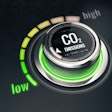Radiologists show a high degree of consistency when interpreting virtual colonoscopy studies, according to research presented at the recent American Roentgen Ray Society (ARRS) annual meeting in Vancouver.
The finding is good news for patients interested in a less invasive screening procedure than the traditional method, optical colonoscopy, according to researchers from the University of Wisconsin in Madison.
"Our intention is certainly not to compete with gastroenterologists in terms of trying to battle over patients but to offer patients another screening option," study lead author Dr. Dustin Pooler told AuntMinnie.com. "The overall goal is to raise the number of people screened for colon cancer. The actual number of patients who are eligible for screening and who actually get screened is 55%."
Pooler and colleagues sought to establish the reliability of virtual colonoscopy, also known as CT colonography or CTC, as a screening exam, he said.
"What makes a good screening test?" Pooler asked. "Its validity, its cost-effectiveness, and its acceptability to patients, but also its reliability. If you're going to use a test in a large population of people, it needs to have consistent interpretation across facilities."
One of the drawbacks of optical colonoscopy is its variability. There's a wide range of adenoma and advanced neoplasia detection rates with the technique, Pooler said. He cited a study that found a range of detection rates for advanced neoplasia of 1.3% to 9.1% and a range of detection rates for any type of adenoma of 9.4% to 32.3% (New England Journal of Medicine, December 2006, Vol. 355:24, pp. 2533-2541).
"Optical colonoscopy requires skill and technique to actually perform the procedure and thus is an operator-dependent test," Pooler told AuntMinnie.com. "Virtual colonoscopy is not. Images are taken with a set protocol, then interpreted, which allows for better quality control."
Pooler and colleagues included 7,050 asymptomatic adults who underwent first-time screening CTC over an 83-month period. The studies were read by one of eight radiologists. The team recorded the size, location, morphology, and diagnostic confidence of all nondiminutive polyps detected at CTC, as well as histopathology results for cases that underwent subsequent endoscopy for polypectomy.
Reading radiologists averaged 12 years in practice, and six of the eight had completed abdominal imaging fellowships, according to Pooler.
In total, 1,566 nondiminutive polyps were detected at screening CTC in 686 adults, of which 1,111 were sent to endoscopy and removed. The overall true-positive rate was 94.4% (1,049 of 1,111). The true-positive rate did not vary significantly by the interpreting radiologist (range, 91.6% to 97.4%, p = 0.294).
Of all true polyps, 40.3% (423 of 1,049) were advanced adenomas. The rate of advanced adenomas per polyp sent to endoscopy did not vary significantly by the interpreting radiologist (range, 38.6% to 59.1%, p = 0.267), with an overall advanced neoplasia prevalence of 4.6%.
"We found a less than twofold difference among radiologists interpreting CTC with regard to advanced neoplasia and adenoma detection rates," Pooler said. "This high reliability, when combined with demonstrated validity, cost-effectiveness, and patient acceptance, offers further evidence that CTC would be successful if widely implemented for [colorectal cancer] screening."





















